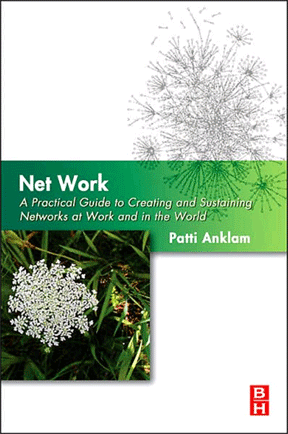Value Network Analysis (VNA) is one of the sense-making tools that I emphasize in my book, Net Work.
I have had the privilege of working with and learning from its inventor, Verna Allee, and have internalized the mapping of value exchanges into my consulting practice. Whether shared or created with the client or not, it’s how I make sense of how a network of actors (inside an organization, or across multiple organizations) gets work done. The units of analysis in a VNA are (1) a role, for example, technical writer, software developer, or end user and (2) exchanges. Connections among roles represent exchanges of value that are either tangible deliverables (proposals, contracts, invoices, payments) or intangible (reputation, trust, well-being). In a VNA for an economic development engine for a Canadian province, we mapped the roles of the development engine, local ICT companies, schools, government agencies, and so on:
This mapping represents the first step in a VNA. Subsequent work would analyze the overall balance of the exchanges and for each of the exchanges, determine its current strengths/weaknesses and steps required for improvement, if any.
Translating this first output (which is almost always done with the stakeholders who represent each of the roles present) into readable and modifiable images for report or presentations, has been difficult, tedious, and mostly manual.
Which is why I am really excited about the announcement of the ValueNetworks.com application. Starting with a simple spreadsheet, I can now type in the roles and exchanges and let the hosted application create a VISIO file, PowerPoint slides, and the outline of a project report. Here’s the VISIO from the above:

Now, I did have to tweak it somewhat, but the hard part was done for me.
Getting to a visual map quickly is just the beginning:
- You can assign people to deliverables, establish relationships between deliverables and assets in the organization, and indicate the perceived value of a transaction to its recipient.
- If the map represents a process, you can sequence the exchanges and get an animated view of the process.
- It generates a report that tells you how the network is balanced (for example, number of tangible vs intangible exchanges, or how balanced each role is with respect to number of exchanges in vs exchanges out)
VNA will still need the human interaction required to build the base map, and now the tool has really been enhanced (it’s like a new tool) to help projects with a detailed analysis and development of an action plan.
It’s always nice to have a new tool for net work.



Pingback: Patti Anklam » Co-Creation — because the knowledge is in the network